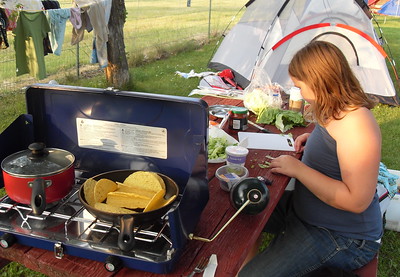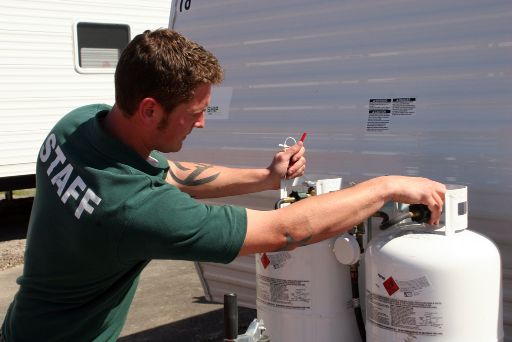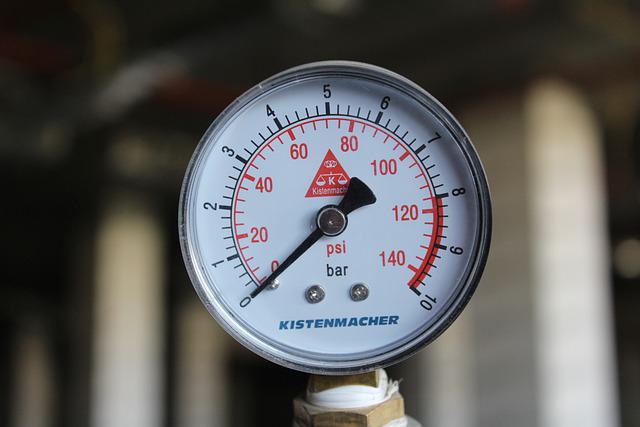
Propane is an efficient and clean-burning fuel that many homeowners rely on for heating, cooking, and other essential household functions. Keeping track of your propane usage can help you manage costs, identify inefficiencies, and ensure a consistent supply of fuel.
In this article, we’ll outline ten steps to help you effectively track your propane usage, providing more details for each point to help you understand and implement these strategies.
- Understand Your Propane Tank Gauge:
Your propane tank gauge is essential for monitoring your usage. The gauge, usually located on top of the tank, shows the percentage of propane remaining inside, typically ranging from 0 to 100%. Familiarize yourself with the gauge by locating it on your tank, understanding the readings, and checking it regularly. To track your usage more effectively, record the propane level weekly or biweekly and observe any changes in the levels to spot trends and plan refills accordingly.
- Keep a Usage Log:
Maintaining a detailed logbook or digital file is vital for tracking your propane consumption over time. Record the tank’s propane level along with the date, and consider including additional information such as outdoor temperatures, appliance usage, and any maintenance performed. Review your log periodically to identify trends, patterns, and seasonal fluctuations in your consumption, which can help you adjust your usage habits and plan for future propane deliveries.
- Estimate Your Daily Usage:
Calculating your average daily propane usage provides a baseline understanding of your consumption patterns. To do this, divide the total propane used in a month by the number of days in that month. Compare your daily usage over several months to identify any unusual spikes or drops in consumption, which may indicate issues with your appliances or opportunities for conservation.
- Monitor Outdoor Temperature:
Colder weather often leads to increased propane usage for heating purposes. Keep track of outdoor temperatures using a thermometer or weather app, and note any significant fluctuations in your usage log. Comparing your propane consumption to temperature changes can help you understand how weather impacts your usage and prepare for increased demand during colder months.
- Evaluate Your Appliances:
Make a comprehensive list of all propane-consuming appliances in your home, including water heaters, furnaces, stoves, and dryers. Research the propane consumption rates for each appliance and estimate their individual usage levels based on your daily routines. By evaluating your appliances’ efficiency and usage patterns, you can identify areas where improvements or adjustments can help reduce your overall propane consumption.
- Conduct Regular Inspections:
Regularly inspect your propane tank, lines, and appliances for signs of damage, corrosion, or leaks that might cause higher propane consumption or safety hazards. Develop a routine inspection schedule and note any issues found in your usage log. Promptly address any problems to maintain efficiency and safety, and consider hiring a professional for a thorough annual inspection.
- Upgrade to Energy-Efficient Appliances:
Investing in energy-efficient propane appliances can help you reduce your overall propane usage and save on costs. Look for appliances with the ENERGY STAR label, which indicates high energy efficiency, and research customer reviews and ratings to ensure reliable performance. Upgrading appliances can lead to significant long-term savings on propane costs and contribute to a more sustainable home.
- Implement Energy-Saving Techniques:
Adopt energy-saving practices to reduce propane consumption further. These may include sealing air leaks with weatherstripping or caulk, insulating your home with high-quality materials, adjusting thermostat settings to conserve energy, and using energy-efficient lighting such as LED bulbs. Incorporate these measures into your daily routines and maintenance schedules, and monitor their impact on your propane usage through your log.
- Consider a Propane Usage Monitor:
Propane usage monitors provide real-time data on your propane consumption and can alert you when levels are low. These devices can help you manage your usage more effectively and avoid running out of fuel unexpectedly. Some monitors connect to your smartphone or computer, allowing you to track your propane usage remotely and receive notifications when it’s time to order a refill. Installing a propane usage monitor can provide valuable insights into your consumption patterns and help you make data-driven decisions to optimize your usage.
- Schedule Regular Propane Deliveries:
Establishing a delivery schedule with your propane supplier ensures you have a consistent supply of fuel. Regular deliveries can also help you anticipate your usage more accurately and make adjustments as needed. Most propane suppliers offer automatic delivery services, which use your historical consumption data to estimate when you’ll need a refill. By scheduling consistent deliveries, you can avoid running out of propane and better predict your fuel costs.
Benefits of Tracking Propane Usage
A. Cost savings
By monitoring your propane usage, you can identify patterns in consumption and better understand how much propane is being used by various appliances in your home or business. This awareness enables you to make informed decisions about usage, which can result in cost savings. For example, you can reduce propane consumption during periods of lower demand or switch to more energy-efficient appliances. Additionally, tracking your usage can help you avoid running out of propane, which would require an emergency delivery at a higher cost.
B. Increased efficiency
Tracking propane usage allows you to identify inefficiencies in your consumption patterns, such as appliances that are consuming more propane than necessary or propane leaks in your system. By addressing these inefficiencies, you can optimize your propane usage, ensuring that you get the most out of your fuel supply. Regular maintenance of your propane appliances and identifying issues early on can also contribute to increased efficiency and reduced fuel consumption.
C. Environmental impact
Propane is a relatively clean-burning fossil fuel, but it still contributes to greenhouse gas emissions. By tracking your propane usage and making efforts to reduce consumption, you can minimize your carbon footprint and lessen your environmental impact. Implementing energy-saving measures, such as insulating your home or using programmable thermostats, can further decrease your propane usage and contribute to a more sustainable lifestyle.
D. Safety considerations
Monitoring your propane usage also has safety benefits. Regularly checking your propane tank and appliances for leaks can prevent potentially dangerous situations, such as gas leaks or fires. Additionally, tracking your usage can help you ensure that you always have an adequate propane supply, reducing the risk of running out of fuel during critical times, such as cold weather or power outages. By staying aware of your propane consumption and taking necessary precautions, you can maintain a safe and comfortable living environment.
Tips for Reducing Propane Consumption
A. Regular maintenance of propane appliances
Keeping your propane appliances in good working condition is crucial for reducing propane consumption. Regular maintenance, such as cleaning or replacing filters and inspecting burners, can help ensure that your appliances are running efficiently and not consuming more fuel than necessary. Scheduling annual checkups with a certified professional can also help detect potential issues early, preventing costly repairs and reducing the risk of unexpected fuel consumption spikes.
B. Energy-efficient appliances and upgrades
Investing in energy-efficient appliances and equipment can significantly reduce your propane consumption. Look for appliances with ENERGY STAR certification or high-efficiency ratings to ensure that you are using the most efficient models available. Additionally, consider upgrading older, less efficient appliances to newer, more energy-efficient options. While the upfront cost may be higher, the long-term savings on propane consumption and reduced environmental impact can make these upgrades worthwhile.
C. Insulating your home
Proper insulation is essential for maintaining a comfortable indoor temperature and reducing propane consumption. By insulating your home, you can prevent heat from escaping during the winter and entering during the summer, reducing the amount of propane needed to heat or cool your living space. Common insulation methods include sealing windows and doors, adding insulation to walls and attics, and using weatherstripping to prevent drafts. A professional energy audit can help identify areas in your home that would benefit most from insulation improvements.
D. Adjusting thermostat settings
One of the easiest ways to reduce propane vis by adjusting your thermostat settings. Lowering the thermostat by a few degrees during colder months and raising it during warmer months can lead to significant fuel savings without sacrificing comfort. Additionally, consider using programmable thermostats that automatically adjust temperature settings based on your daily schedule, ensuring that your home is not being heated or cooled unnecessarily when no one is present. By making small adjustments to your thermostat settings, you can effectively reduce your propane consumption and lower your energy costs.
Conclusion
Tracking your propane usage is essential for managing costs, identifying inefficiencies, and ensuring a consistent fuel supply. By following the steps outlined in this guide and expanding on each point, you can better understand your consumption patterns, make informed decisions about your propane use, and ultimately create a more energy-efficient home. Implementing these strategies can lead to significant long-term savings and contribute to a more sustainable lifestyle.

Mike is an experienced propane technician with over 15 years of professional experience in the field. He has dedicated his career to helping customers with their propane needs, from installation to maintenance and repair. Together with Jeremy, he co-founded this website to provide useful information and guidance to customers seeking reliable propane services.



